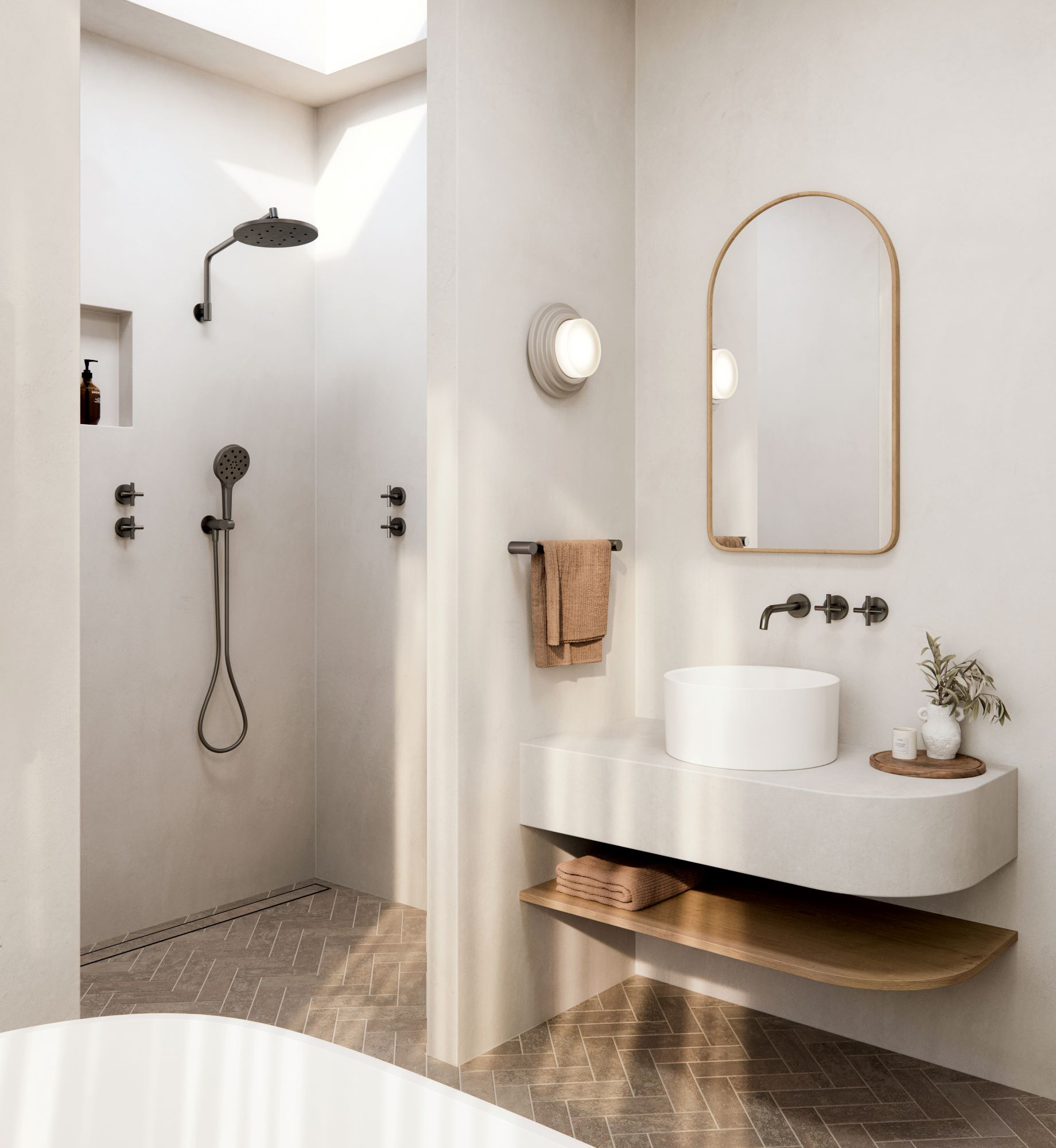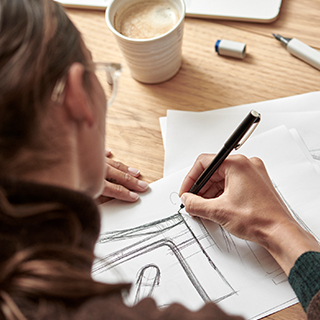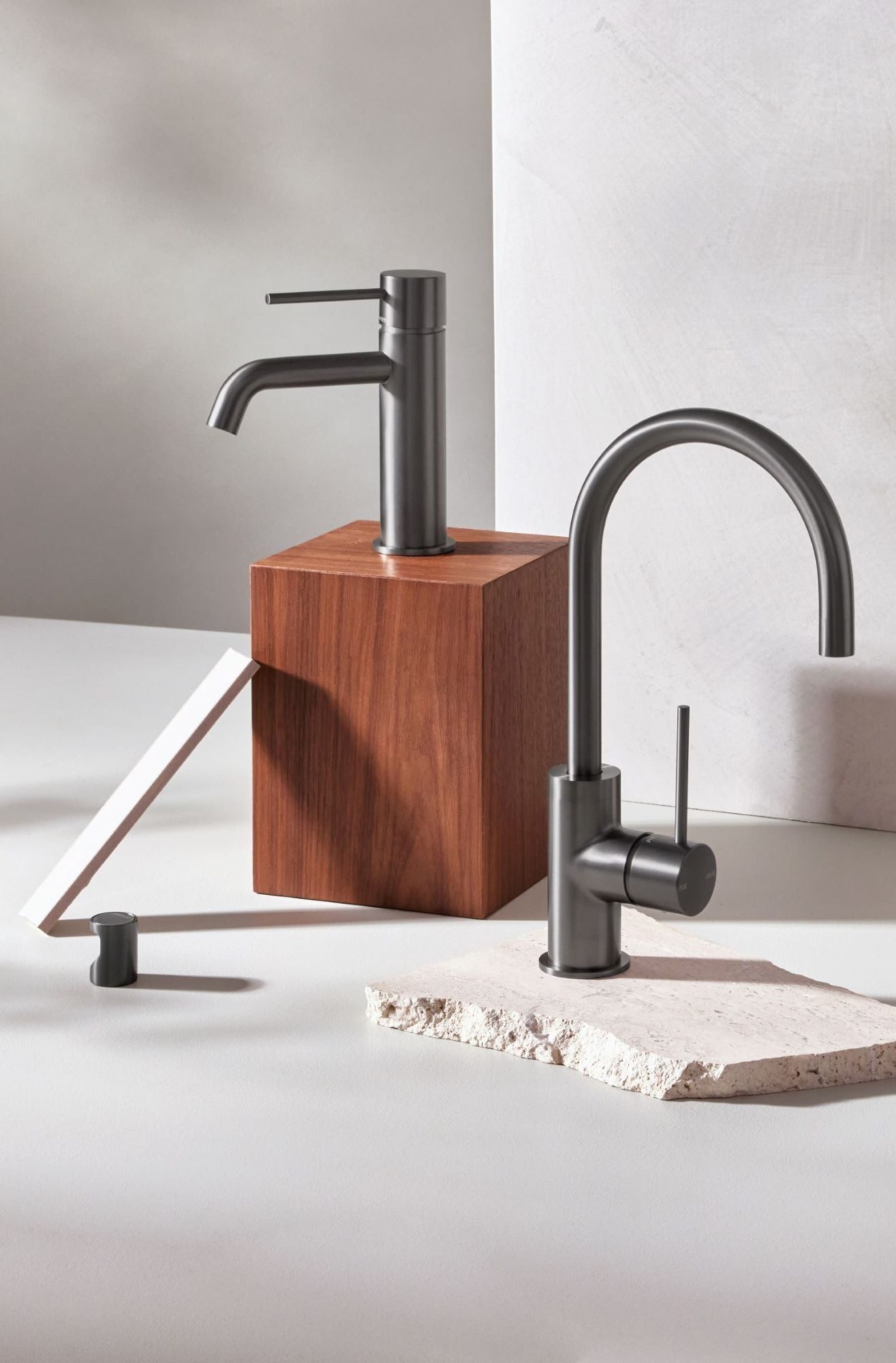
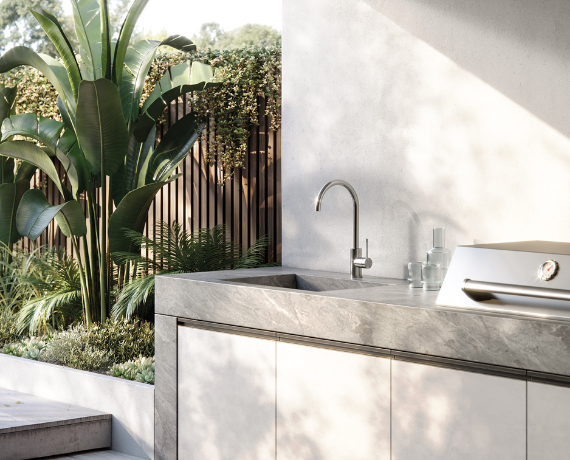
How to design the perfect outdoor kitchen
The kitchen may be the heart of the home, but the great outdoors is the key to Australian hearts. Here’s how you can combine the two to enjoy endless alfresco dinners.
The perfect way to bring the indoors outside, outdoor kitchens are fast becoming a must-have in Australian gardens. With the cost of houses rising and blocks becoming ever smaller, it’s no surprise that people are extending their homes by creating alfresco areas for year-round enjoyment.
Location, location
Deciding on the size and location is the natural place to begin your outdoor kitchen journey. If you have an existing outdoor entertaining area, this will be easy, but if not, ensure that you have easy access to your internal kitchen – you want the inside and outside to flow from one into the other so that you can easily transfer food and drinks and entertain your guests.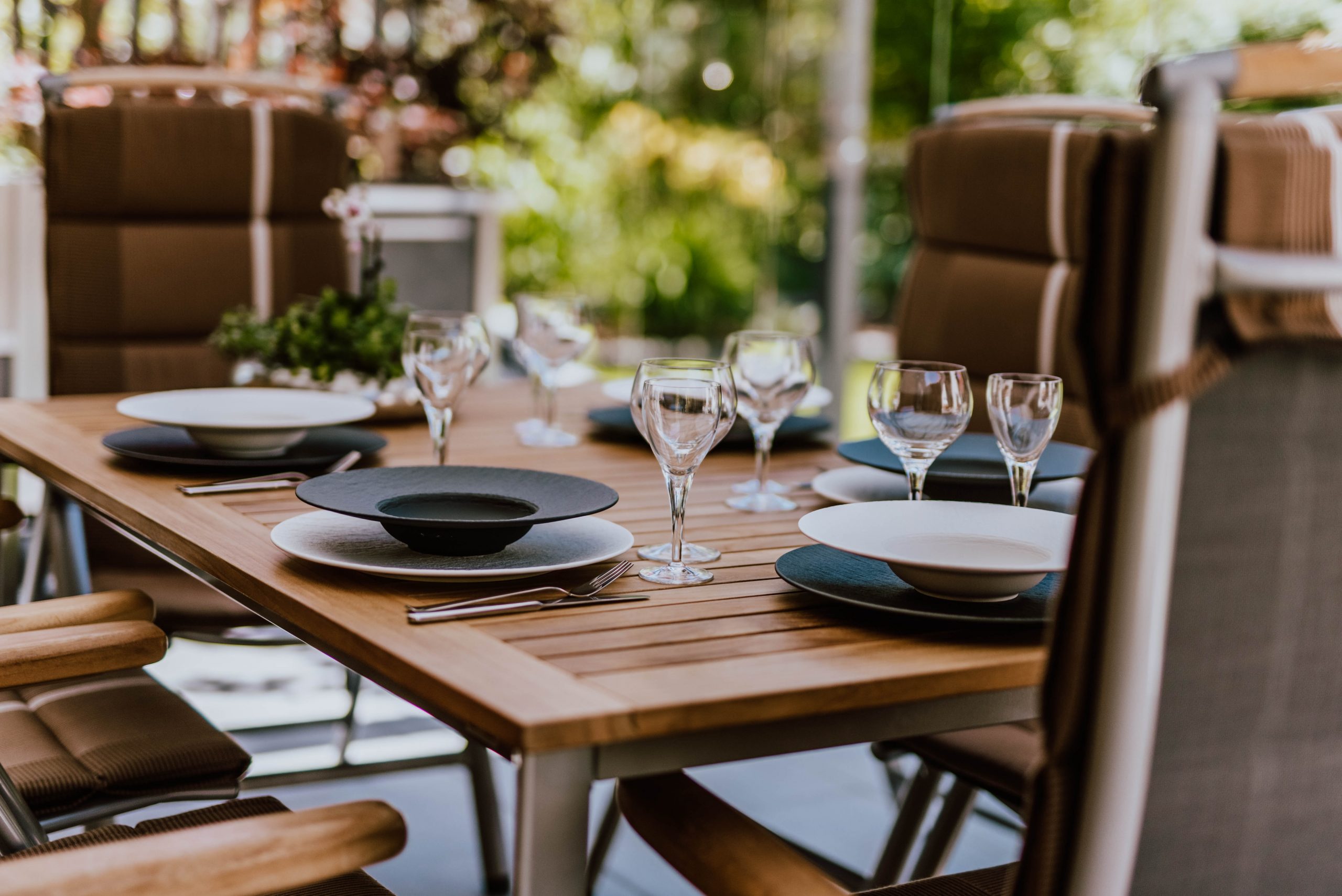
If your garden doesn’t allow for this, you’ll need to choose the best area and create a stand-alone kitchen rather than a supplementary one, so bear in mind that you will need space for prep, storage and possibly refrigeration.
When it comes to design, using subtle references to internal finishes is a great way to create a seamless transition from outside in. For example, match the stone from your internal bench to your outside prep area.
Consider the layout
Once you’ve decided on the size and layout of the kitchen, you can start looking at its functional layout. Generally speaking, the same principles apply for outdoor kitchens as they do for indoor kitchens, with the position and proximity of cold areas, hot areas, wet areas and dry areas all designed for maximum efficiency.
 Image: Instagram via @scenicblue_design
Image: Instagram via @scenicblue_design
There are some extra considerations for an outdoor kitchen, however; while an indoor kitchen’s layout is defined by the walls, doors and windows that surround it, an outdoor kitchen often defines the space on its own.
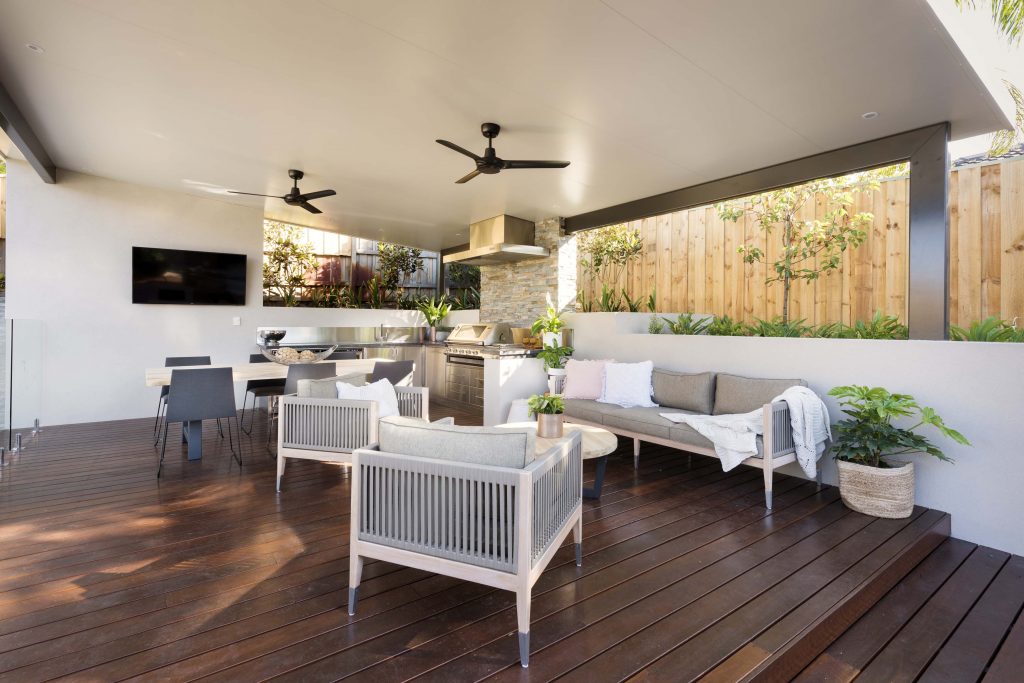 Image: Joel Barbitta
Image: Joel Barbitta
For this reason, L-shaped designs are popular choices outside, lending a sense of room division for the area. A good approach from here is to divide the outdoor kitchen into three main zones: preparation, cooking and serving.
Choosing materials
As mentioned, your outdoor kitchen will likely be subject to all kinds of weather including high winds, heavy rains, extreme heat and possibly even ice and snowstorms, so it’s important to choose materials that are tough enough to withstand the elements while still being low maintenance enough to easily clean.
Stainless steel is a particularly great option for outdoor benchtops, appliances, sinks and tapware. It is highly durable and weather resistant and also has a sleek, contemporary look. If you can, choose appliances made from marine grade 316 stainless steel such as our new Vivid Slimline SS collection. An evolution of Phoenix’s popular and timeless Vivid Slimline range, Vivid Slimline SS is particularly suited to outdoor kitchens and coastal residential areas. This is thanks to the superior corrosion resistance of 316 stainless steel, which provides extra years of life and usage where harsh elements are an issue.
 Vivid Slimline SS Sink Mixer and Basin Mixer
Vivid Slimline SS Sink Mixer and Basin Mixer
For a warmer design, you could consider tiling your benchtop to offset your stainless-steel accessories. With a wide range of colours and textures, tiles are able to fit any design and style.
Choosing appliances
Are you a passionate foodie and want to cook up a storm of gourmet dishes? Or will you mainly be cooking simple dishes for family? Deciding how you will use the space will not only determine the type of appliances you need, but also how much prepping space and storage to plan for.
Over the last few years, there has been a rise in the popularity of creating a true outdoor kitchen, with people installing not just BBQs, but ovens, cooktops, range hoods, sinks, taps, refrigeration and even dishwashers.
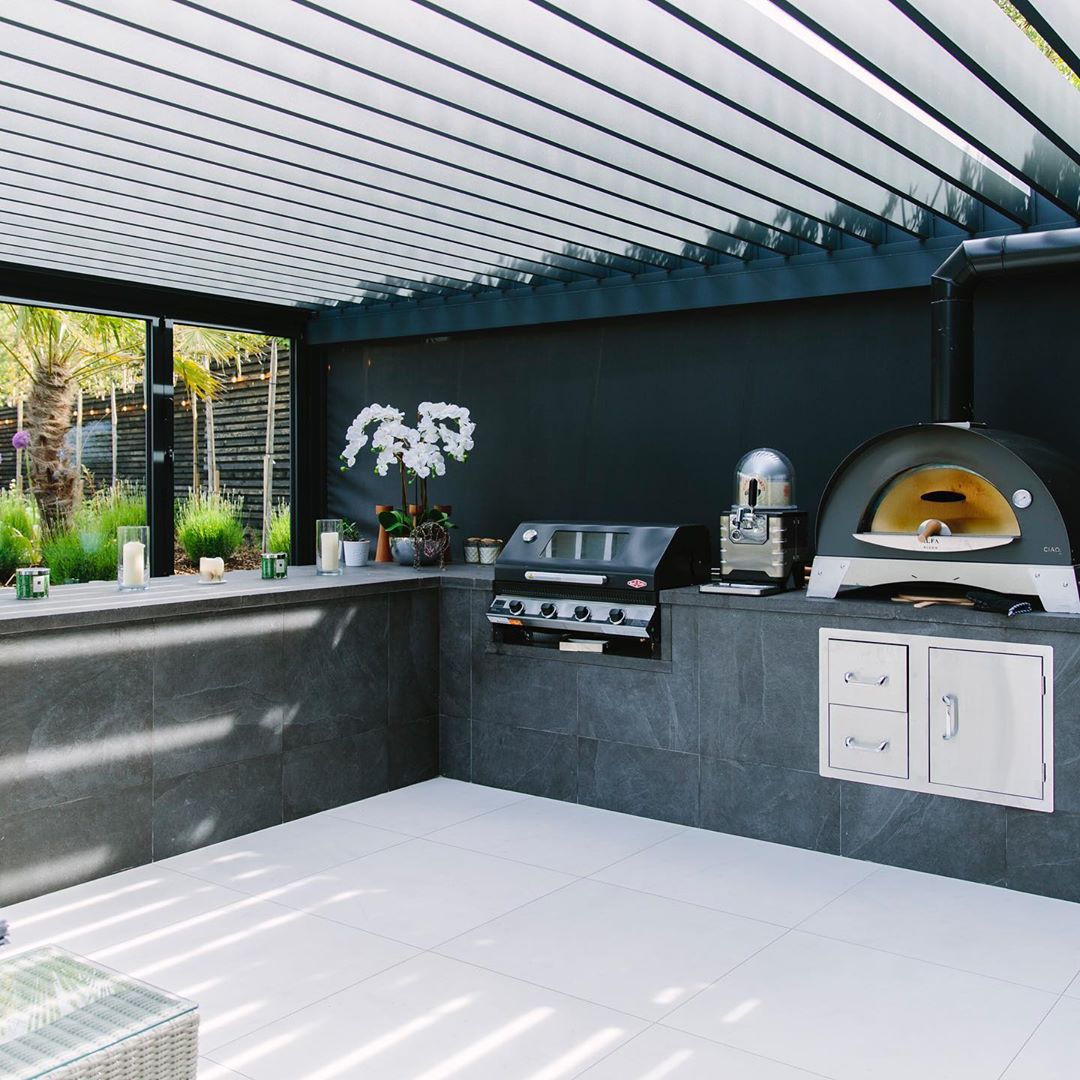 Image: Instagram via @wm_design_studio
Image: Instagram via @wm_design_studio
It’s important to note that you will need to purchase specialist outdoor appliances if you decide to go down this route so that they will be able to withstand harsh conditions though the summer and the winter.
Another trend seen in outdoor kitchens is the installation of smokers, wood-fired pizza ovens and South American style grills.
Light it up
The final touch for your outdoor kitchen is lighting. It’s good to choose a variety of lighting, such as task lights for cooking and prep surfaces, hanging lights for overhead structures such as pergolas and wall lights and downlights to flood the area when the sun goes down.
If you want to create a more romantic, intimate atmosphere or to highlight a specific area, accent lighting is the way to go. Consider up lighting around a fountain or plants, path lights or decorative string lights. You could also add a pendant light over the dining table. And don’t forget about candles, either traditional or LED, which can also create an intimate setting.

